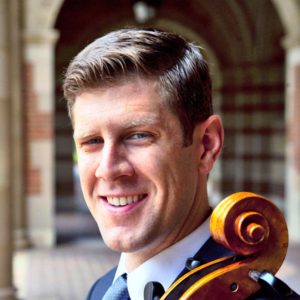
Cello and Marathon Training
Jonathan Thomson
Rule #1 and Rule #2 focus on the mental aspect of training: about setting your intention before working on a passage. This is necessary to practice effectively, and ultimately leads to better performances. Our experience playing the cello is a delicate interplay between mind and body, which is a balance that must be cultivated again and again as age, circumstances, and stakes change.
Athletes face many of the same experiences in training and competition. Throughout my education, I found that my attitudes about the cello and the way I practiced stemmed from my experiences playing sports. Particularly during my graduate studies, running became a counterpoint to music. Running and cello both informed the other. Running helped relieve the stresses of performances, auditions, competitions, juries, and the ones made up by myself in my own brain.
While I am an amateur runner (and by no means elite), my experiences have taught me a great deal about myself, and have also helped me to look from a distance at how I practice and teach music. Over the next few posts, I will talk about aspects of marathon training and their relationships to the cello. There are numerous marathon training methods, each of which cite scientific reasoning and real life/personal/professional celebrity success stories to support its theories. I will focus on the general principles that are widely agreed upon or relate most powerfully to the cello. My personal experiences have contained a lot of fluidity: what worked before may not work exactly the same way every time. Variety in training and flexibility to try different approaches has been necessary to keep my running life fresh. Looking back on each race and the way I trained brings new lessons and informs the way I look ahead to my next running goal (racing or otherwise). This attitude also allows me to adjust to changing circumstances, health, and motivation levels. Pondering these things can seem safer and more natural in running than in cello, because there is less at stake (although I do admit to being perhaps too competitive with myself).
Setting Goals
A typical marathon training plan spans roughly 16 weeks and begins from an established base of fitness. The training plan will contain specific goals for each day, week, and cycles of about 4 weeks, all to prepare the runner for a single date in the future. Creating a similar “training plan” for musical performances far in advance, with mini goals throughout, can aid in maintaining a high level of motivation and providing accountability.
Technique/Efficiency
There are differences in opinion among running coaches and cello teachers about technique (the “right way” to do things), however the search for ever greater efficiency should be ongoing. Consulting many experts to find commonalities–as well as learning from personal experience–is critical for continued improvement.
Injury Prevention
Along with proper technique, one must be careful to avoid injury. For runners, this means proper rest, stretching, and cross-training (such as strength training, yoga, swimming, or other activities). Musicians must also find activities to counteract the physical demands of playing their instruments. Beyond physical concerns, this concept also extends to mental fatigue and motivation.
Variety
“The spice of life,” variety keeps us engaged, even while practicing the same techniques/repertoire on the cello, or perhaps running the same loops that return us to the starting location. Marathon training employs workouts with clearly defined changes in distance, pace, and style in order to develop different aspects of running over time. Each type of workout is calculated to build on previous workouts in the surrounding week/month/training program–all to prepare you for race day. Studying the specificity of these training plans can help musicians design their own training plans for their most important and demanding performances.
Finally, before continuing on to discussing these concepts in more detail, it must be noted that there are ways that music and sports are not the same. It is not my goal to place sports above music, or to say that musicians should precisely copy runners’ training methods. I will close here by giving perhaps the most uplifting difference between athletes and musicians: longevity. The length of our careers is unique, even among other kinds of performing artists. A tennis player may be considered old around age 29, a football running back about age 28, a figure skater (and many Olympic athletes) early-20s, or a ballet dancer in mid-20s. Distance runners actually can have long careers (men peak in mid 40s and women in early 50s), but a musician can still continue performing and improving through very long careers!
Subjects: Practicing
Tags: cellobello, CelloBlog, Jonathan Thomson, Marathon, training
